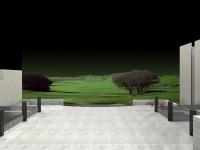Design Team
Farhan Zia
Shehryar Naqvi
Gouhar Nayab
Zahed Mohiuddin
Dialectic
Before venturing into an architectural exploration of the above stated programme, the team felt that it was imperative to first keenly analyse as to what it meant to design such a facility as the Children’s Museum for Peace and Human Rights; a space which served as the critical juncture and threshold between juvenilia and adulthood; a space which served as the in-between or transitional dialogic between the innocuous world of simplicity and clarity and the harsh world of complexity and conflict; a space where supple minds were to be nurtured to value the notions of peace, harmony, tolerance, and respect for identities of various groups, nationalities and belief systems; but most importantly what kind of a space would convey this idea of peace?
Was peace to be conceived as a forceful superimposition of order or a consequence of tolerance and respect for mutual coexistence of various identities?
Strategy
The emergent design strategy was therefore not one of superimposition, but subtle juxtaposition of varying simple geometries and platonic forms that playfully interface without forsaking their formal integrity and identity.
Delicate balancing and harmonizing of architectonics is effected through interplay of rectilinear and curvilinear geometries that conflate but never coalesce, and the separatrix between diversity and disparity is precariously maintained through compositional devices that convey reconciliation and tolerance over negation and preponderance. Various thresholds and portals of transition between inside/outside, public/private, solid/void etc. are accentuated as moments of architectural synapse serving as spaces that compel reflection; courtyards and light wells act as strategic architectural devices that fill these lacunae in the narrative of space sequences.
The resultant design is intended to be an ensemble of simple forms and geometries that strike a dialogue of negotiation and not negation; the choice and use of materials (fair face concrete with varying textures) suggest a neutrality rather than adherence to locality and specificity of context.
2006
2006
.jpg)
.jpg)
.jpg)


.jpg)

